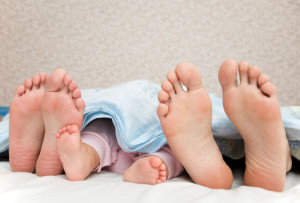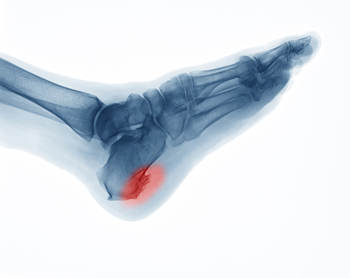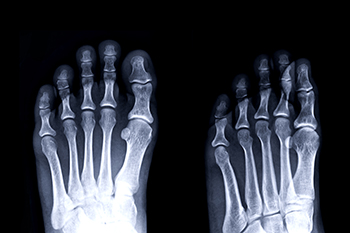Connect With Us
Blog
Items filtered by date: January 2024
Fascinating Facts About Kids' Feet

Children's feet, while seemingly small, play a monumental role in their overall well-being and development. At birth, a baby's foot consists of soft, pliable cartilage that gradually transforms into bone over time. During the early years, proper footwear is vital to accommodate the rapid growth and formation of their delicate arches. It is not uncommon for children's feet to appear flat initially, as arch development continues throughout childhood. Remarkably, a child's foot can grow up to two sizes in a single year, underscoring the need for frequent size checks and footwear updates. Toes may take unexpected twists and turns as kids explore different physical activities and sports. If you are seeking additional information about children’s foot development, it is suggested that you consult a podiatrist who can provide you with the knowledge you are seeking.
Making sure that your children maintain good foot health is very important as they grow. If you have any questions, contact one of our podiatrists of New Jersey. our doctors can provide the care you need to keep you pain-free and on your feet.
Keeping Children's Feet Healthy
Having healthy feet during childhood can help prevent medical problems later in life, namely in the back and legs. As children grow, their feet require different types of care. Here are some things to consider...
Although babies do not walk yet, it is still very important to take care of their feet.
Avoid putting tight shoes or socks on his or her feet.
Allow the baby to stretch and kick his or her feet to feel comfortable.
As a toddler, kids are now on the move and begin to develop differently. At this age, toddlers are getting a feel for walking, so don’t be alarmed if your toddler is unsteady or ‘walks funny’.
As your child gets older, it is important to teach them how to take care of their feet.
Show them proper hygiene to prevent infections such as fungus.
Be watchful for any pain or injury.
Have all injuries checked by a doctor as soon as possible.
Comfortable, protective shoes should always be worn, especially at play.
If you have any questions, please feel free to contact our office located in Neptune City, NJ . We offer the newest diagnostic and treatment technologies for all your foot care needs.
Causes and Risk Factors for Heel Spurs

Heel spurs, also known as calcaneal spurs, are bony outgrowths on the bottom of the foot, often extending from the heel toward the arch. These pointy, hooked, or shelf-like formations, when seen on X-rays, can measure up to half an inch. Heel spurs are a result of long-term strain on muscles and ligaments and can occur as soft tissues in the heel wear out. Also, trauma, such as bruising the heel or tearing its protective membrane, can contribute to their development. Age plays a role, too. The natural wear and tear of heel pads, diminishing shock absorption, can make the heel more susceptible to calcium deposits, which form heel spurs. Various factors increase the risk of heel spurs, notably athletic activities like running and jumping. Engaging in these activities on hard surfaces, a common occurrence in sports, can accelerate wear and tear on the heel. Age and gender also play a role, with older individuals and women more prone to developing heel spurs. Weight problems and wearing improper footwear, such as non-supportive shoes or flip-flops, can further elevate the risk. If you are experiencing heel pain that may be caused by heel spurs, it is suggested that you schedule an appointment with a podiatrist for an exam, diagnosis, and treatment.
Heel spurs can be incredibly painful and sometimes may make you unable to participate in physical activities. To get medical care for your heel spurs, contact one of our podiatrists from New Jersey. our doctors will do everything possible to treat your condition.
Heels Spurs
Heel spurs are formed by calcium deposits on the back of the foot where the heel is. This can also be caused by small fragments of bone breaking off one section of the foot, attaching onto the back of the foot. Heel spurs can also be bone growth on the back of the foot and may grow in the direction of the arch of the foot.
Older individuals usually suffer from heel spurs and pain sometimes intensifies with age. One of the main condition's spurs are related to is plantar fasciitis.
Pain
The pain associated with spurs is often because of weight placed on the feet. When someone is walking, their entire weight is concentrated on the feet. Bone spurs then have the tendency to affect other bones and tissues around the foot. As the pain continues, the feet will become tender and sensitive over time.
Treatments
There are many ways to treat heel spurs. If one is suffering from heel spurs in conjunction with pain, there are several methods for healing. Medication, surgery, and herbal care are some options.
If you have any questions feel free to contact our office located in Neptune City, NJ . We offer the latest in diagnostic and treatment technology to meet your needs.
How Bones and Muscles in the Feet Work Together

The human foot is a marvel of intricate design. A symphony of bones, joints, muscles, and ligaments work in harmony to facilitate movement and provide essential support. Comprising 26 bones, the foot's structural integrity is maintained by an elaborate network of joints that allow for flexibility and articulation. Muscles, spanning from the calf to the toes, create the dynamic movements needed for activities like walking, running, and jumping. Ligaments, sturdy bands of connective tissue, secure bones together, forming stable joints while allowing controlled movement. From the heel to the toes, each component plays a critical role in weight distribution, balance, and shock absorption. The arches, formed by the alignment of bones, contribute to the foot's natural shock-absorbing properties. Understanding this intricate interplay of bones, joints, muscles, and ligaments is essential for appreciating the resilience and versatility of our feet, which serve as the foundation of our daily mobility and physical well-being. If you are having problems with any part of your feet and ankles, it is suggested that you visit a podiatrist who can offer treatment solutions.
If you have any concerns about your feet, contact one of our podiatrists from New Jersey. our doctors can provide the care you need to keep you pain-free and on your feet.
Biomechanics in Podiatry
Podiatric biomechanics is a particular sector of specialty podiatry with licensed practitioners who are trained to diagnose and treat conditions affecting the foot, ankle and lower leg. Biomechanics deals with the forces that act against the body, causing an interference with the biological structures. It focuses on the movement of the ankle, the foot and the forces that interact with them.
A History of Biomechanics
- Biomechanics dates back to the BC era in Egypt where evidence of professional foot care has been recorded.
- In 1974, biomechanics gained a higher profile from the studies of Merton Root, who claimed that by changing or controlling the forces between the ankle and the foot, corrections or conditions could be implemented to gain strength and coordination in the area.
Modern technological improvements are based on past theories and therapeutic processes that provide a better understanding of podiatric concepts for biomechanics. Computers can provide accurate information about the forces and patterns of the feet and lower legs.
Understanding biomechanics of the feet can help improve and eliminate pain, stopping further stress to the foot.
If you have any questions please feel free to contact our office located in Neptune City, NJ . We offer the newest diagnostic and treatment technologies for all your foot and ankle needs.
